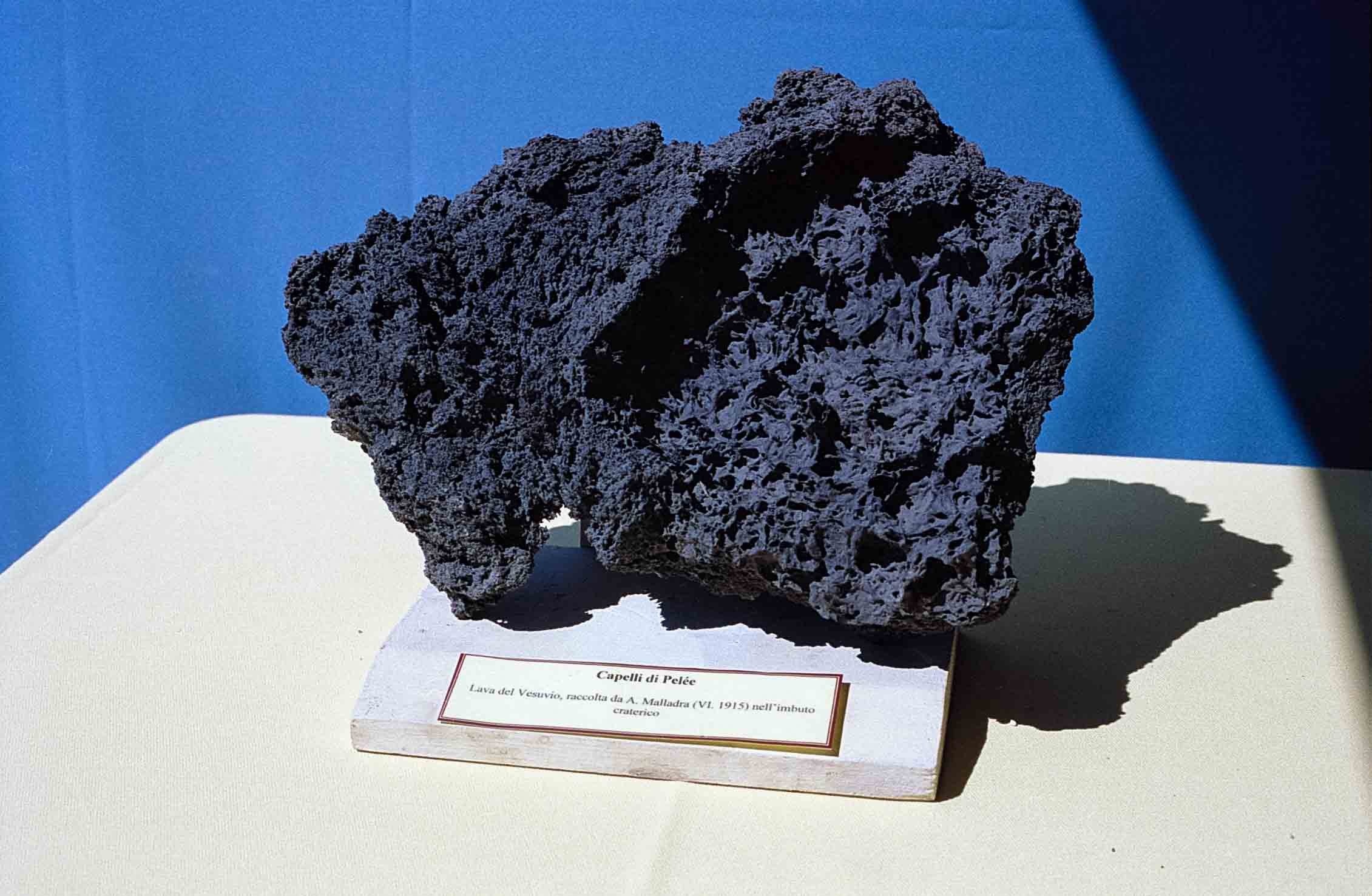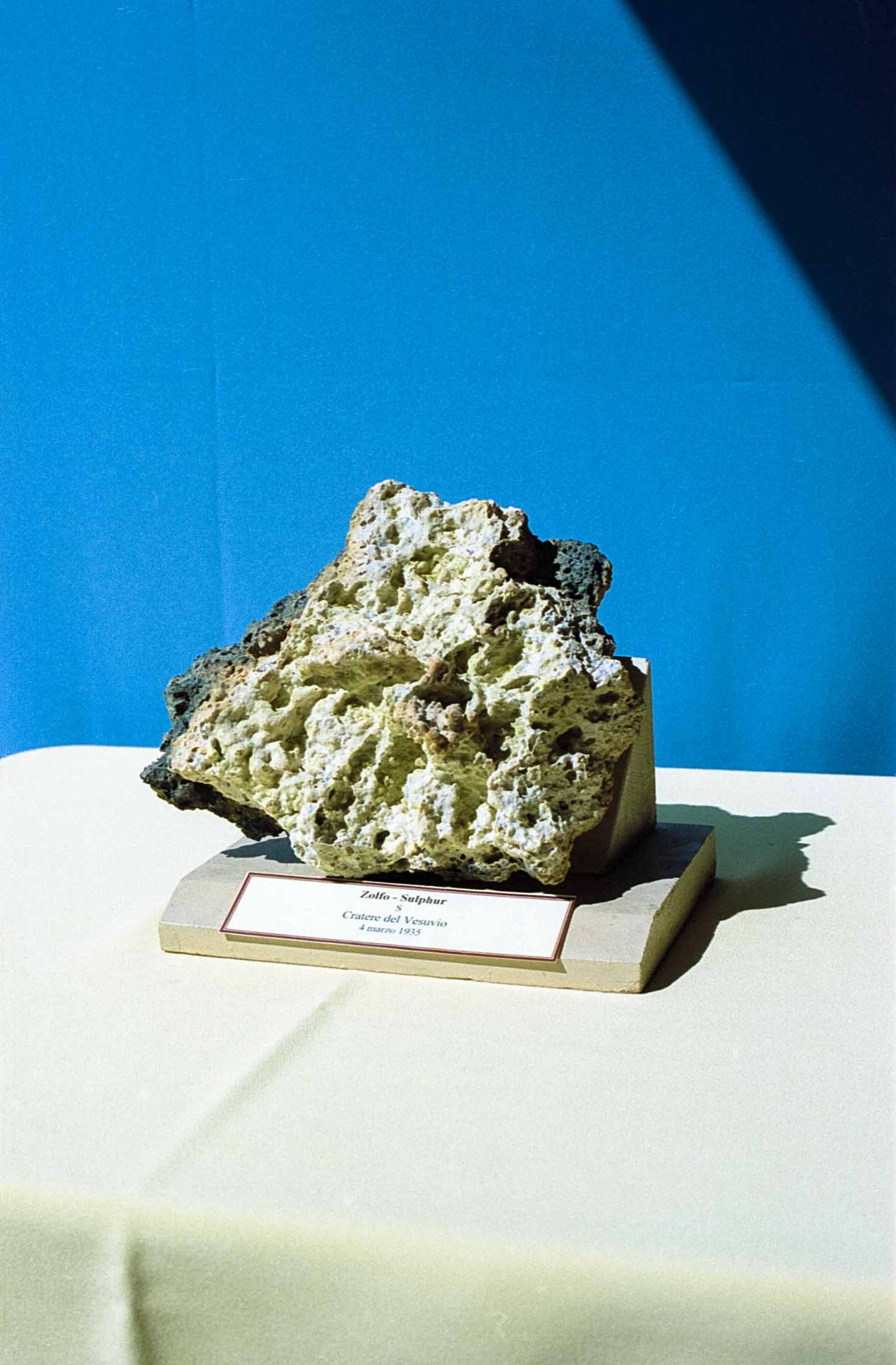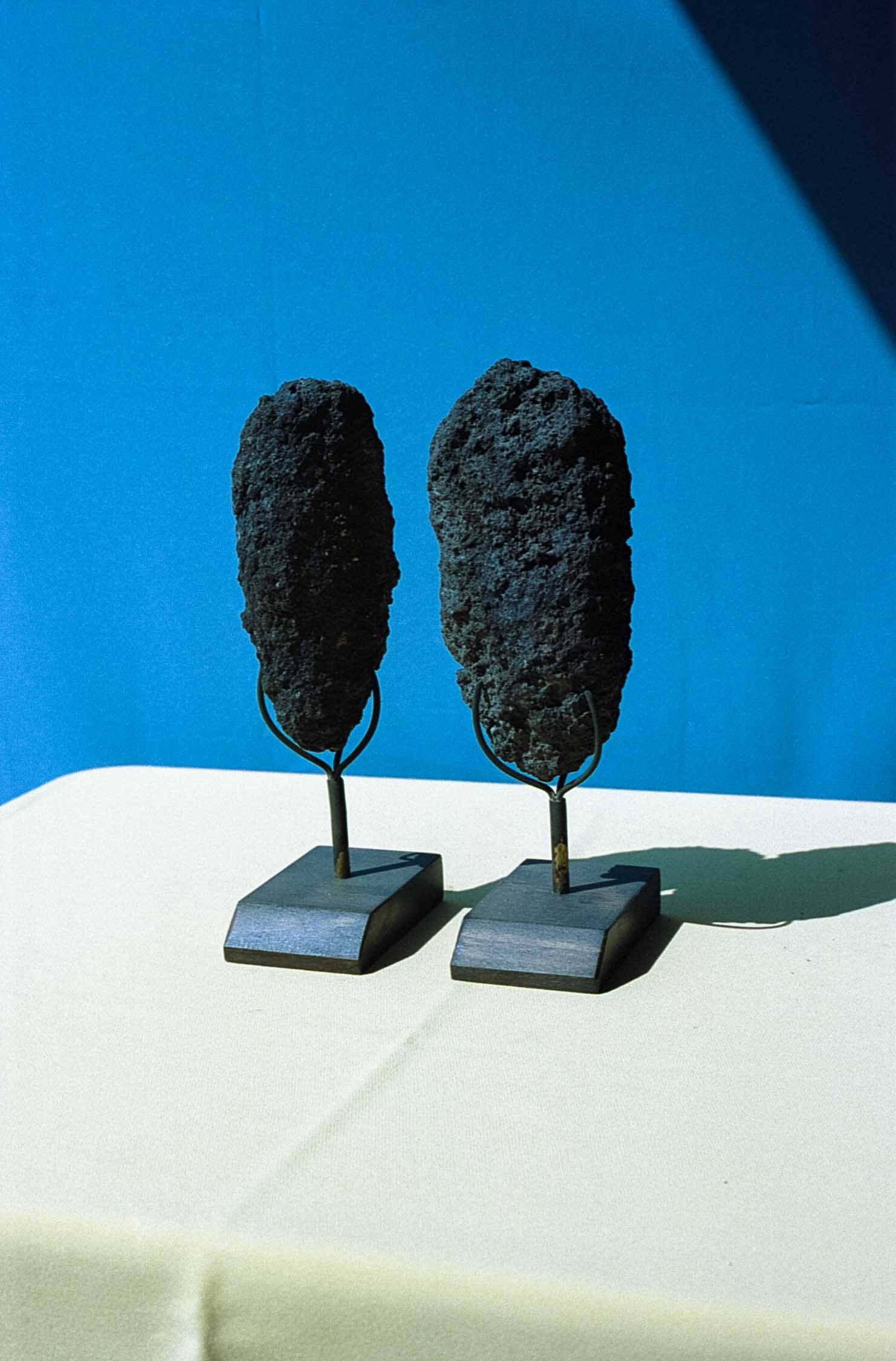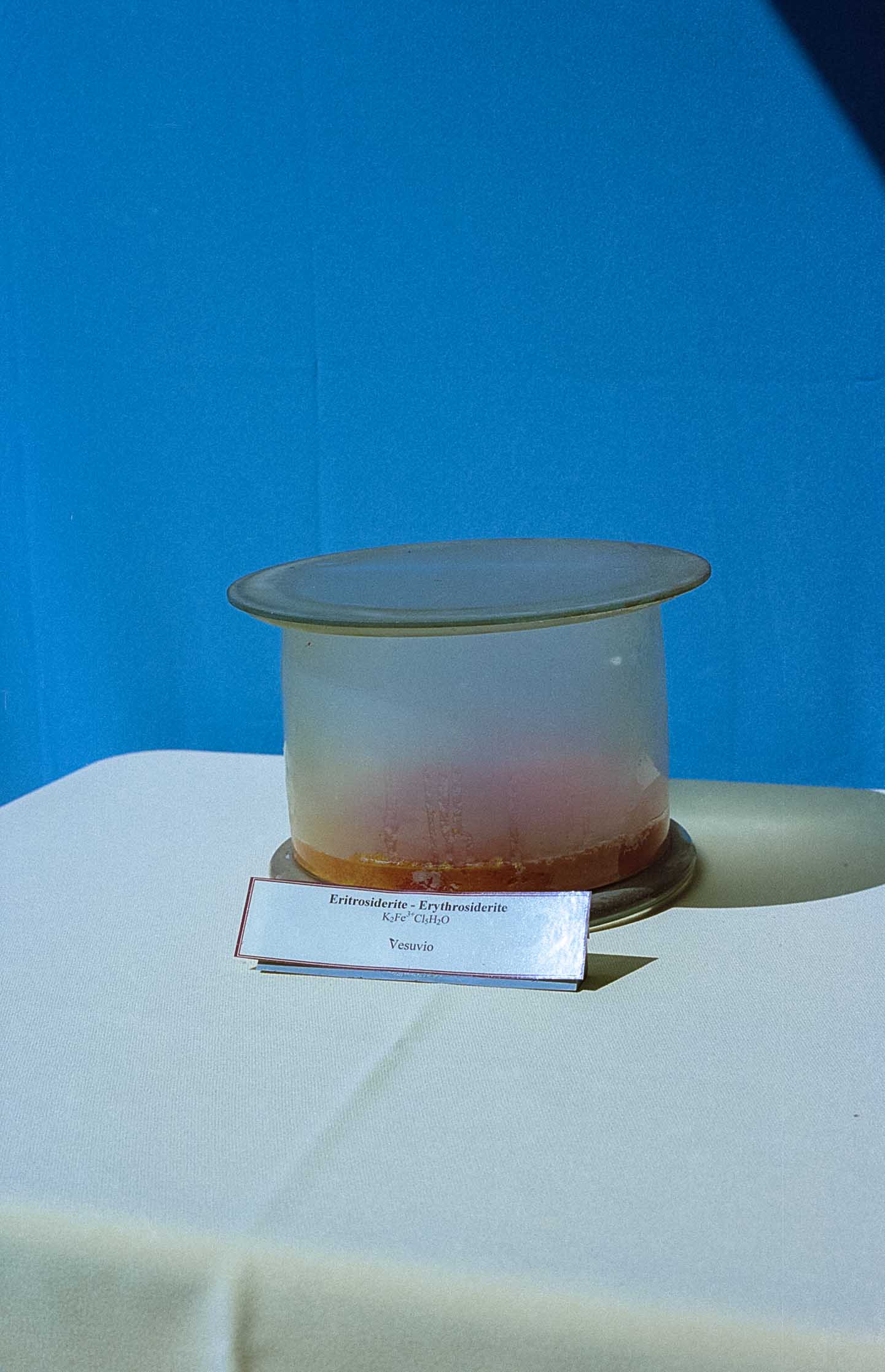The history of the Royal Mineralogical Museum at the Federico II University of Naples somehow follows the development of the sciences in the Kingdom of Naples since the second half of the eighteenth century. The monumental palazzo that hosts it (Palazzo del Salvatore) is a sixteenth-century building in the historical heart of Naples. Bought in 1554 by the fathers of the Society of Jesus, it was used as a Jesuit college, Collegio Massimo, until November 1767, when by governmental decree the Jesuits were expelled from the Kingdom of Naples. The university moved into the Jesuit buildings in 1777 and thereafter other spaces were given to the Academy of Science and Arts and the Collegio Ferdinandeo. Founded in 1801 by Ferdinand IV of Bourbon, the Royal Mineralogical Museum is one of the oldest mineralogy museums in Italy.
Following the Bourbon court’s intentions, the museum was to be a modern research centre that contributed to discovering mineral resources in the Kingdom of Naples and at the same time a place of study for the young generations. The museum is reached via the monumental staircase designed by Cosimo Fanzago around 1650, accessible both from the gateway in Via Mezzocannone and through the splendid courtyard of statues built in the first half of the seventeenth century. Upon entering, you’re immediately met by a wide, well-lit corridor which hosts the collection of historical scientific instruments. Comprising over 70 tools dating from the mid-nineteenth century until the 1970s, the collection recounts the evolution of mineralogical instruments and consequently the progress of miner- alogical studies in Naples. The next room is the vestibule, with the Great Crystals collection, where crystals of particularly notable dimensions and perfect forms are displayed in walnut cabinets made in the second half of the twentieth century. Standing out among these are the pair of 482 kg hyaline quartz crystals from Madagascar, donated to Charles of Bourbon in 1740. There’s no doubt that the minerals on display capture the visitor’s attention, but it’s the next room, the main hall, that is truly breathtaking. It was originally the eighteenth-century library of the Jesuits’ Collegio Massimo, whose construction began in 1688 and was completed in 1700; the room is 36.5m long and 11m wide and is laid out over two levels: the lower level is skirted by glass cabinets made of precious woods, with Doric columns; the upper level is a gallery with a series of Corinthian columns joined by wooden arches. Visitors are truly taken aback by the majesty of the room. Despite the numerous resto- ration operations over the years, the room has retained its original layout, except for the gilded wooden carvings in the four corners which represent geodetic instruments and mineral tools from the second half of the nineteenth century.
In addition, the museum played an important role in the social and political history of the Kingdom of Naples first and Italy lat- er. The main hall was chosen as the venue for the inauguration of the 7th Congress of Italian Scientists which took place in Naples from 20 September to 5 October 1845, with no fewer than 1,613 participants. In 1848 the museum hosted the first meeting of the Chamber of Deputies, after Ferdinand II of Bourbon granted the Constitution on 29 January of that same year. The hall was restored and the ceiling frescoed with roses and festoons with the names of the provinces in the kingdom. A few years later, in 1860, the same room hosted one of the twelve polling stations for the plebiscite on annexation to the Kingdom of Italy. In 1862 restoration work was carried out in the room and the floor, still with us today, was totally replaced using splendid green and brown tiles made by the Colonnese manufacturers of Naples. The passage from the Bourbon to the Savoy kingdom is marked by nine, different coloured tiles that form the Savoy coat of arms at the sides and in the corners of the room. Dramatic events such as the 23 July 1930 earthquake and the wartime events of August 1944 caused notable damage to the buildings and the collections. The ceiling of the room collapsed in the 1930 earthquake and was rebuilt but none of the decorations were recovered. The museum was reopened in 1960 and was able to recoup its scientific, educational and social function, but following the November 1980 earthquake, it became unsafe again owing to the serious damage that it suffered.
The work to restore and consolidate the structures, restore the wooden furnishings and the floor, and fit out the new museum spaces, lasted over ten years. Today the exhibition covers a total area of covers a total area of 800 square metres, taking up three sides of the building and overlooking the Cortile del Salvatore where the various oratories were once found. Ever since its establishment, the Royal Mineralogical Museum has had the privilege of displaying precious specimens from the most important mineral beds in the world, but also the volcanic areas of Campania and in particular the Somma and Vesuvio volcanoes. The museum houses around 46,000 exhibits, divided into collections which cover a significant period of time. The main hall displays the museum’s Grand Collection, comprising minerals representing numerous geological areas around the world; their beauty and size makes some of them true rari- ties. Many of the minerals were collected in Germany, Hungary, Romania, Russia, France and Britain between 1789 and 1797 by an expedition of six young natural scientists sent to the Mining Academy in Freiberg (Saxony, Germany) to improve their mineralogical and mining knowledge. They’re of particular interest to scientists and collectors since they come from areas in Europe where the mines have since shut down. Smaller but equally as important pieces are on display in cases made in the second half of the twentieth century, arranged in two rows with a wide passageway in the middle to highlight the beautiful floor.
After the main hall, you come to the Scacchi room, dedicated to the illustrious mineralogist and geologist who directed the museum from 1844 to 1891. This area houses the unique and unrepeatable Vesuvian Collection, which is of exceptional value and scientific interest as several of the mineral species are no longer generated. The set of Vesuvius minerals is probably one of the most beautiful in the world and is recognized as one of the greatest collections of samples for scientific research. The collection of Vesuvius minerals was started in 1844, when Arcangelo Scacchi, appointed director of the museum and professor of mineralogy that year, decided to bring all the minerals from the Somma and Vesuvius volcanoes together in a special collection. The samples were continually enriched with specimens gathered and studied by Scacchi, but also with others that had been purchased, donated or exchanged. In this room too, the miner- als are set out in nineteenth-century glass cabinets and display cases made in the following years, with large exhibits such as volcanic bombs and lava samples. The col- lection consists of around 3,500 exhibits, all produced by the activity of the famous Neapolitan volcano, representing many eruptions from 1631 until the most recent, in 1944. It’s striking to associate these splendid crystals of such different shapes and colours with a volcano imagined by all to be a source of danger and destruction. Among the species on display, it’s worth pointing out the particularly fascinating vesuvianite crystals; this mineral species was discovered for the first time at Monte Somma in 1723 and given its name by Werner in 1795. The colours range from brown, to amber, to black. Also worthy of mention are the garnets, in almost perfect rhombododecahedrons, with colours varying from bright red to brown and black, together with the splendid and rare blue crystals of lazurite, lapis lazuli, and the splendid samples of haüyne, with crystals of a more or less intense blue colour in the geodes of limestone blocks. And then we have the microcrystalline blue pyroxene, the tiny but perfect pyroxene crystals from the 1929 eruption and the distinct crystals of yellow pyroxene; and sarcolite, a rare pink-orange, glassy mineral discovered for the first time in the world in 1807 by G. Thomson in the lava cavities of Monte Somma. The leucite (from the Greek leucos, white), discovered by the geologist Abraham Gottlob Werner in 1791, was for a long time confused with other minerals, in particular garnet, so much so that it was called white Naples garnet. In addition, there’s a curious collection of medals made from Vesuvius lava dating from between the beginning of the nineteenth century and 1944, the year of the volcano’s last eruption. More interesting medals coined in lava were made in 1804 and 1805 in honour of Ferdinand IV and his wife Maria Carolina of Austria, displaying the initials of the sovereigns and their effigy, and in 1809 in honour of Joachim Murat, King of Naples from 1808 to 1815. Finally, the adjacent room reserves two more collections: the collection of minerals from Campanian tuff begun in 1807 and the small but important collection of meteorites, with a specimen of siderite weighing 7,583 grams, found in Toluca, Mexico.
In short, a visit to the Royal Mineralogical Museum at the Federico II University of Naples is an unexpected surprise, a place where you’ll be enveloped in and bowled over by the blend of history, culture and beauty.





